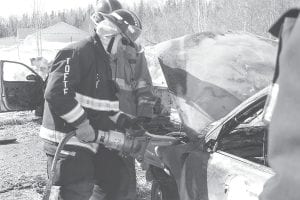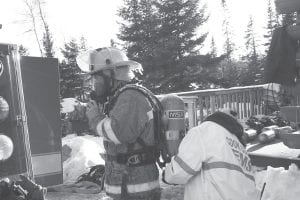From our terrain and unprecedented waters to the men and women who respond to thousands of emergency calls every year (most on a volunteer basis), Cook County is unique in so many ways. Our dedicated emergency responders face challenges people in other parts of the state do not.
Despite the fact that our population can skyrocket from 5,200 to 75,000 on any given day in high seasons, thanks to being a premier destination and home to attractions like the Boundary Waters Canoe Area Wilderness, the Gunflint Trail, Lutsen Mountains, America’s coolest small town and more, we only have a limited number of emergency responders. Many of these community heroes wear many hats and do so on a volunteer basis.
Our emergency responders cover a lot of ground and are up against unique geography:
Second-largest county in Minnesota, a total area of 3,340 square miles (8,700 km), of which 1,452 square miles is land and 1,887 square miles (57 percent) is water.
Minnesota’s highest natural point, Eagle Mountain at 2,301 feet (701 m), and the highest lake in Minnesota, Lake Abita at 2,048 feet (624 m), both located in Cook County. Home to three National Protected Areas: Grand Portage National Monument; Superior National Forest, Boundary Waters Canoe Area Wilderness.
These volunteers are your neighbors and friends in Cook County and Grand Portage and serve through local fire departments, Emergency Medical Services (EMS), Search & Rescue units, STOP Teams. They receive ongoing training and support to help deliver in times of emergency.
There are nine fire departments throughout the county and Grand Portage to fight structure, vehicle and wildland fires. They are managed by volunteer board of directors and receive funding from property taxes and outside grants of equipment, money, and training. Volunteer fire departments also have Relief Associations and trustees.
Along with firefighters, departments have volunteer Emergency Medical Responders (EMRs), and Emergency Medical Technicians (EMTs) who arrive at the scene to provide immediate assistance, strategize response, stabilize, and prepare transportation for those suffering injury or illness. From driving an ambulance to first aid to basic life support, there are many ways to participate in EMS – it all depends on the level of training. EMRs provide entry-level patient care followed by the intermediate EMTs and then certified paramedics hwo work with North Shore Health Ambulance.
Vehicle incidents like fires and accidents require traffic management to protect victims, law enforcement and First Responders. Two departments have specific Strategic Traffic Operations Programs (STOP teams) who respond to assemble barriers and direct non-involved traffic.
From the board of directors to Search & Rescue members, to the firefighters who are the first in, our volunteers make it happen along with our Sheriff ’s Office and 911 Dispatch. Over the course of the next several editions, we’ll introduce you to these departments, many of the members, and also present opportunities where you can do a little bit to make our emergency services even better.




Loading Comments